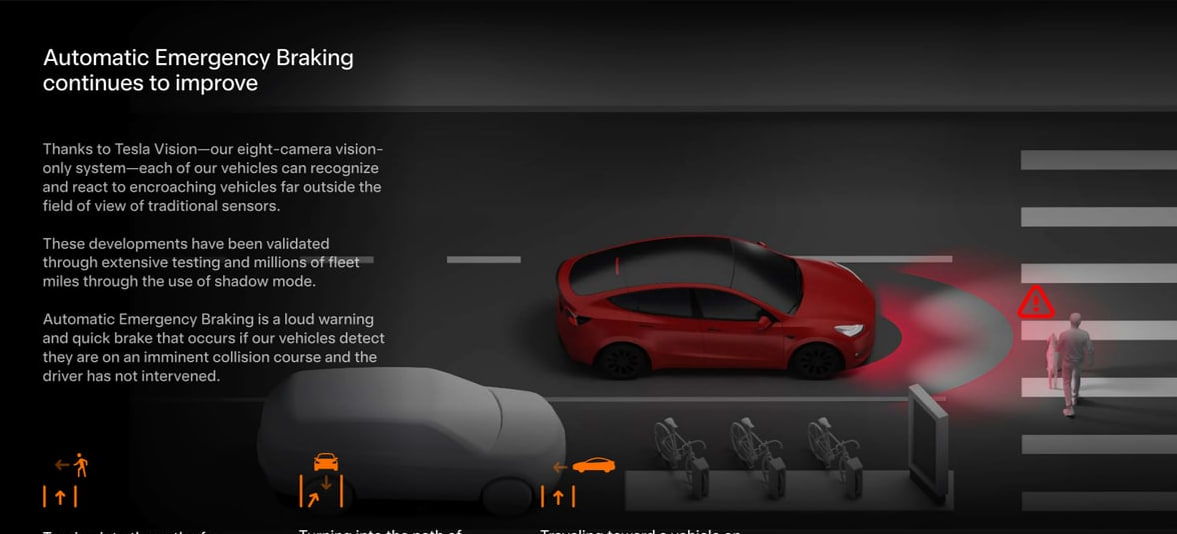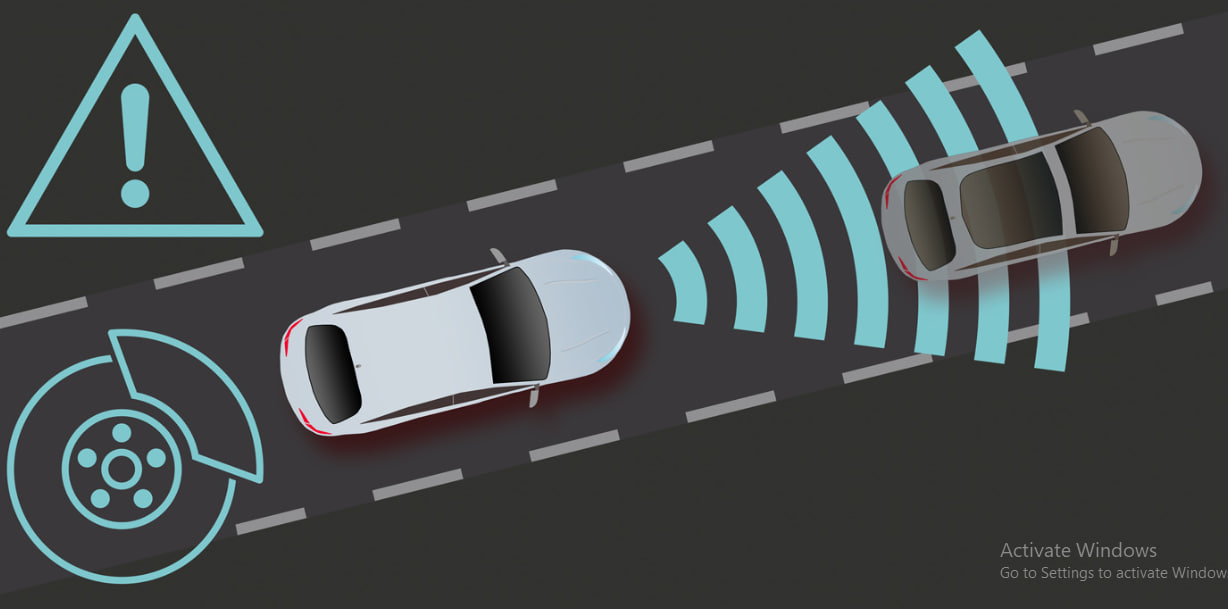
Automatic emergency braking technology is being applied for 2023
As technology continues to advance, the automobile industry is not left behind. Car manufacturers are always on the lookout for ways to make driving safer and more convenient for drivers. In recent times, a lot of focus has been placed on automated driving systems and how they can be leveraged to reduce road accidents. One of such innovations gaining attention is the automatic emergency braking (AEB) technology. While many car models currently feature this technology, it is set to become even more widespread by 2023. But what is AEB technology, and how does it work? This is what we’ll be exploring in this post.

System components
Automatic emergency brake systems are becoming increasingly common in modern vehicles. These systems use a combination of sensors, processors, and actuators to detect potential collisions and automatically engage the brakes to prevent or mitigate a crash. In this article, we’ll take a closer look at the various components that make up an automatic emergency brake system.1. Sensors
The first component of an automatic emergency brake system is the sensors. These sensors are typically mounted on the front of the vehicle and use a combination of radar, lidar, and cameras to detect potential hazards. The sensors constantly scan the road ahead, looking for obstacles such as other vehicles, pedestrians, or cyclists.
2. Processor
Once the sensors have detected a potential hazard, the information is sent to the system’s processor. The processor uses complex algorithms to analyze the data and determine whether a collision is likely to occur. If the system determines that a collision is imminent, it will send a signal to the actuator to engage the brakes.
3. Actuator
The actuator is the component that physically engages the brakes. In most automatic emergency brake systems, the actuator is an electric motor that applies the brakes when triggered by the processor. The actuator is typically connected to the vehicle’s existing braking system and can apply the brakes with the same force as the driver.
4. User Interface
While the automatic emergency brake system is designed to operate independently, most systems include some sort of user interface. This interface allows the driver to adjust the system’s sensitivity, turn it on or off, and receive alerts when the system detects a potential hazard. The user interface can be a simple button or switch on the dashboard, or it can be integrated into the vehicle’s infotainment system.
5. Backup Power
Finally, many automatic emergency brake systems include a backup power source. This backup power source ensures that the system can engage the brakes even if the vehicle’s main power supply is disrupted. This is especially important in the event of a collision, as the system may be the only way to prevent further damage or injury.
In conclusion, automatic emergency brake systems are a critical component of modern vehicle safety. By using a combination of sensors, processors, actuators, and user interfaces, these systems can detect potential hazards and automatically engage the brakes to prevent or mitigate collisions. As more and more vehicles are equipped with automatic emergency brake systems, we can expect to see a significant reduction in the number of accidents and injuries on our roads.
Automatic emergency braking system protects against rear-end collisions
Rear-end collisions are one of the most common types of accidents on the road, causing thousands of injuries and deaths every year. However, with the development of new safety technologies, drivers now have more tools at their disposal to help prevent accidents. One of these tools is the automatic emergency braking system, which is becoming increasingly popular in new vehicles.An automatic emergency braking system is an advanced safety feature that uses sensors and cameras to detect potential collisions and automatically apply the brakes if the driver fails to take action. This technology is particularly effective in preventing rear-end collisions, which occur when a vehicle collides with the vehicle in front of it.
The system works by using sensors located at the front of the vehicle to detect when a potential crash is imminent. If the system detects that the vehicle is getting too close to the vehicle in front of it, it will automatically apply the brakes to slow down or stop the vehicle. This can help prevent a collision or reduce the severity of the impact if a collision is unavoidable.
There are many benefits to having an automatic emergency braking system in your vehicle, including:
1. Increased safety:
By automatically applying the brakes in a potential collision situation, the system can help prevent accidents and reduce the severity of collisions.
2. Reduced insurance costs:
Many insurance companies offer discounts for vehicles equipped with advanced safety features, including automatic emergency braking systems.
3. Improved driving experience:
Knowing that your vehicle is equipped with advanced safety features can give you peace of mind and make driving a more enjoyable experience.
4. Increased resale value:
Vehicles equipped with advanced safety features are often in high demand on the used car market, which can help increase the resale value of your vehicle.
If you’re in the market for a new vehicle, it’s worth considering one with an automatic emergency braking system. While the technology may add to the cost of the vehicle, the benefits in terms of safety and peace of mind can be well worth the investment.
In conclusion, an automatic emergency braking system is an important safety feature that can help protect against rear-end collisions. With the increasing availability of this technology in new vehicles, drivers have more options than ever to help prevent accidents and keep themselves and their passengers safe on the road.
Auto reverse emergency brake

Auto Reverse Emergency Brake: What is it and How Does it Work?Driving on the road can be a thrilling experience, but it can also be dangerous at times. That’s why car manufacturers have been working on new technologies to make driving safer for everyone. One of these technologies is the Auto Reverse Emergency Brake.
In this , we’ll take a closer look at what the Auto Reverse Emergency Brake is, how it works, and why it’s important for drivers.
What is the Auto Reverse Emergency Brake?
The Auto Reverse Emergency Brake is a safety feature that is designed to prevent accidents while reversing. It is a system that automatically applies the brakes when the car is reversing and detects an obstacle in its path.
This technology is particularly useful in situations where visibility is limited, such as when backing out of a parking spot or driveway. It is also helpful when there are pedestrians or other vehicles around, as it can help prevent collisions.
How does it work?
The Auto Reverse Emergency Brake system uses sensors to detect obstacles in the car’s path when it is reversing. These sensors are located on the front and rear of the car, and they use a combination of radar, ultrasonic, and camera technology to detect obstacles.
When an obstacle is detected, the system will automatically apply the brakes to prevent the car from colliding with the obstacle. This can happen even if the driver does not apply the brakes themselves.
Why is it important?
The Auto Reverse Emergency Brake is important because it can help prevent accidents and save lives. According to the National Highway Traffic Safety Administration (NHTSA), there were 9,378 fatalities in motor vehicle crashes involving a light vehicle in 2018. Of those fatalities, 14% involved reversing.
The Auto Reverse Emergency Brake can help reduce the number of accidents caused by reversing. It is also helpful for drivers who may have limited mobility or visibility, such as those with disabilities or elderly drivers.
The Auto Reverse Emergency Brake is a useful safety feature that can help prevent accidents while reversing. It uses sensors to detect obstacles and automatically applies the brakes to prevent collisions. This technology is particularly useful in situations where visibility is limited or when there are pedestrians or other vehicles around.
If you’re in the market for a new car, be sure to consider one with the Auto Reverse Emergency Brake. It’s a feature that can provide peace of mind and help keep you and your loved ones safe on the road.
Expert and customer reviews
Automatic emergency braking (AEB) is a safety feature that is becoming increasingly common in modern cars. This system is designed to help prevent accidents by automatically applying the brakes when a collision is imminent. AEB has been praised for its potential to save lives, but how do real-world experts and customers rate the performance of this technology?To answer this question, we’ve scoured the web for expert and customer reviews of AEB. Here’s what we found:
Expert Reviews
According to a study by the Insurance Institute for Highway Safety (IIHS), vehicles equipped with AEB are involved in 50% fewer rear-end collisions than those without the technology. The study found that AEB was particularly effective at preventing accidents at low speeds, such as in stop-and-go traffic.
Consumer Reports conducted their own testing of AEB on 2016-2018 models of various car brands. They found that the technology was effective at preventing collisions in most situations, but there were some limitations. For example, AEB was less effective at preventing collisions with pedestrians than with other vehicles.
Another study by the European New Car Assessment Program (Euro NCAP) found that AEB was effective at preventing collisions with other vehicles, but less so with pedestrians and cyclists. The study also found that the performance of AEB varied widely between car models.
Customer Reviews
Customers who have experienced AEB in real-world situations have mixed opinions of the technology. Some drivers have reported that AEB has helped them avoid accidents and feel safer on the road. Others have complained about false alarms and abrupt braking that can be jarring.
One common complaint among customers is that AEB can be overly sensitive in certain situations, such as when passing a large vehicle or driving on a winding road. Some drivers have even reported that AEB has activated when there was no immediate danger, causing unnecessary braking and potentially dangerous situations.
Overall, the reviews of AEB from both experts and customers are mixed. While the technology has been shown to be effective in preventing accidents in many situations, there are limitations and potential drawbacks to consider.
Conclusion
Automatic emergency braking is a promising safety feature that has the potential to save lives and prevent accidents. However, as with any new technology, there are limitations and potential drawbacks to consider. Experts agree that AEB is effective at preventing collisions in many situations, but there is room for improvement.
Customers who have experienced AEB have mixed opinions of the technology, with some reporting that it has helped them avoid accidents and feel safer on the road, while others have complained about false alarms and overly sensitive braking.
If you’re considering purchasing a car with AEB, it’s important to do your research and read reviews from both experts and customers to get a comprehensive understanding of the technology’s performance. Ultimately, the decision to invest in AEB is a personal one that depends on your individual driving habits and preferences.






